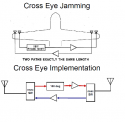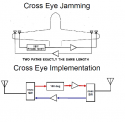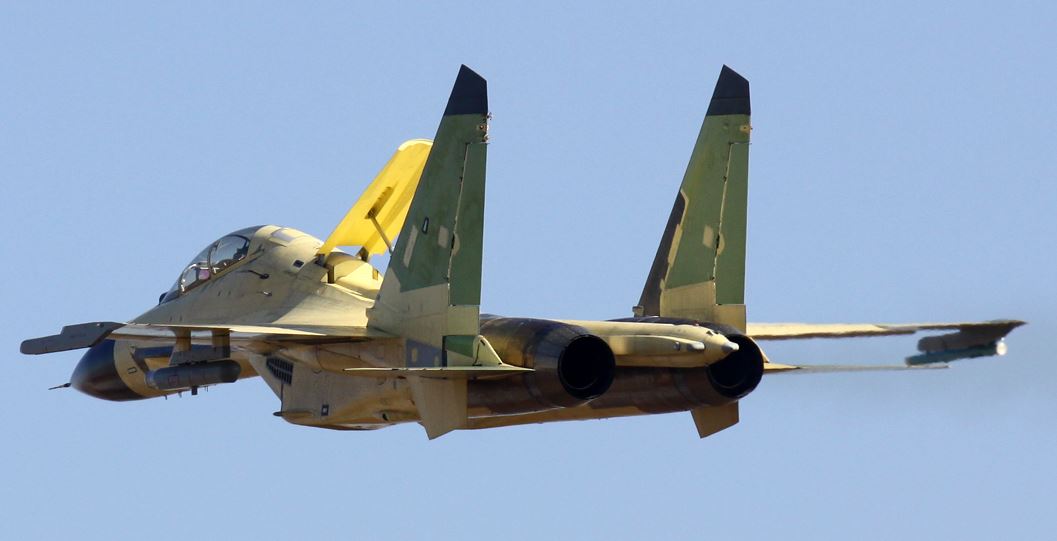The debate should be grounded on facts and not conjecture. The ALQ-218 and the Gripen wing tip pods are both receivers - those are facts. The question is why are they located in those places? I will address that in a jiffy.
Firstly, if you wish to make a case that the wing tip pods are primarily for cross eye jamming as with the Chinese then make a case based on the Chinese technical configurations. Making an argument based around Western EW architecture as a surrogate to support your case is fallacious in logic. More importantly, cross eye jamming is just one of the many deception techniques available in ECM and resorting to wing tip pods for such purpose is scraping the barrel as far as capability. If it was still the 90's, maybe that might hold water.
In the past 20 plus years there are specific EW trends reflected in Western EW architecture and are basically common whether it is the US, Spectra or Saab because of the nature of the RF threats and the emerging technology required to deal with them. This leads to the question of placement of receiving antennas as reflected in Western approach. One of the primary mission set associated with ECM platforms is in conducting SEAD/DEAD missions or in support of such activities. Up to the early 90's. Western RWR capability in detecting emitters and their location was limited to bearing only and an angular error of 10 degrees Translated, at a distance of 100 kms, the ranging error was in excess of 17 kms. Such capability mean, DEAD missions has very limited success rate and this was reflected in the Kosovo air campaign. Increasing technological capability saw the introduction of the ALR-67(V)3 which brought the error down to 1 degree. This RWR is what is installed in the F-18E/F today. However this was the limit of the technology using angle of arrival measurement as 1 degree error is still a 1.7 kms error in range. In order to further improve the accuracy, interferometry ranging using time distance of arrival technique (TDOA) was introduced which require maximum spacing of the receiving antennas. Interferometric capability is today common in all modern Western EW suite and also explain the placement of the receiving antennas. Such an architecture reduced the angular accuracy to 0.5 degree. Spectra reportedly is able to deliver this level of accuracy. However, the error in ranging at 0.5 degrees is still approximately 870 m. Today, the EA-18G has a ranging accuracy down to less than 50 m using a combination of interferometric ranging and 3 ship triangulation through data link. Such ranging accuracy is equivalent to an angular accuracy within 0.03 degrees. However to get to this final target reliably, Link 16 was simply inadequate due to bandwidth and latency. Consequently, the EA-18G adopted TTNT links which offer very low latency.
All these discussions are seriously OT as it is a JF-17 thread and is my final post on this subject.. .
Oh please. Look at the diagrams closely. The one shown with the cross eye jamming is the Saab Gripen. Then look down below, and you see the wingtip of the Saab Gripen being explained as having AESA on both ends and the pipe as the receiver. That is SAAB explaining both.


Maybe that you don't know that for directional finding ESM, one of the antennas for this would be cylindrical, or in this case, like a pipe. The tube that makes up the pod is the main receiver. It presents you with the most surface for signal gathering and at a 360 degree FOV.
It also goes to show and explain the angled AESA on the tips are ECM. You have the basis for cross eye jamming. Compared to a single pod, in cross eye, the received signal on one pod is stored, distorted then emitted on the other pod. Subsequently, the received signal on the other pod is emitted to the this pod.


The other stuff you mention has no relevance to the subject. Of course, a minimum distance between receivers are needed for DF techniques, and so does cross eye jamming. That is how you insert angular errors in the opposing radar, which screws up tracking.
You also seem to fail to realize the obvious --- the pods act as both general ESM receivers to support the EW equipment on board, and at the same time, are also capable of cross eye jamming. These pods are taking both cakes and eating it.
Firstly, if you wish to make a case that the wing tip pods are primarily for cross eye jamming as with the Chinese then make a case based on the Chinese technical configurations. Making an argument based around Western EW architecture as a surrogate to support your case is fallacious in logic. More importantly, cross eye jamming is just one of the many deception techniques available in ECM and resorting to wing tip pods for such purpose is scraping the barrel as far as capability. If it was still the 90's, maybe that might hold water.
This argument makes no sense at all. Physics works equally for everyone, and it is for that reason what is needed to achieve this same functionality for one, will have to work the same way on the other side of the world. There is no such thing as "Western" or "Chinese" EW architecture per se. EW is EW. Radar is Radar. Radio is Radio. A Photon is a Photon. Some universally available laws of physics are involved. Light does not travel slower or faster in China than in the US. Designs are the same or similar because they intend to solve the same subject. Not to mention there are no national boundaries for ideas and designs either. You can copy, you can open source, you can learn it from someone who learned it from someone else, in addition to arriving the same solutions in parallel. People write research papers on such things all the time, like this.














